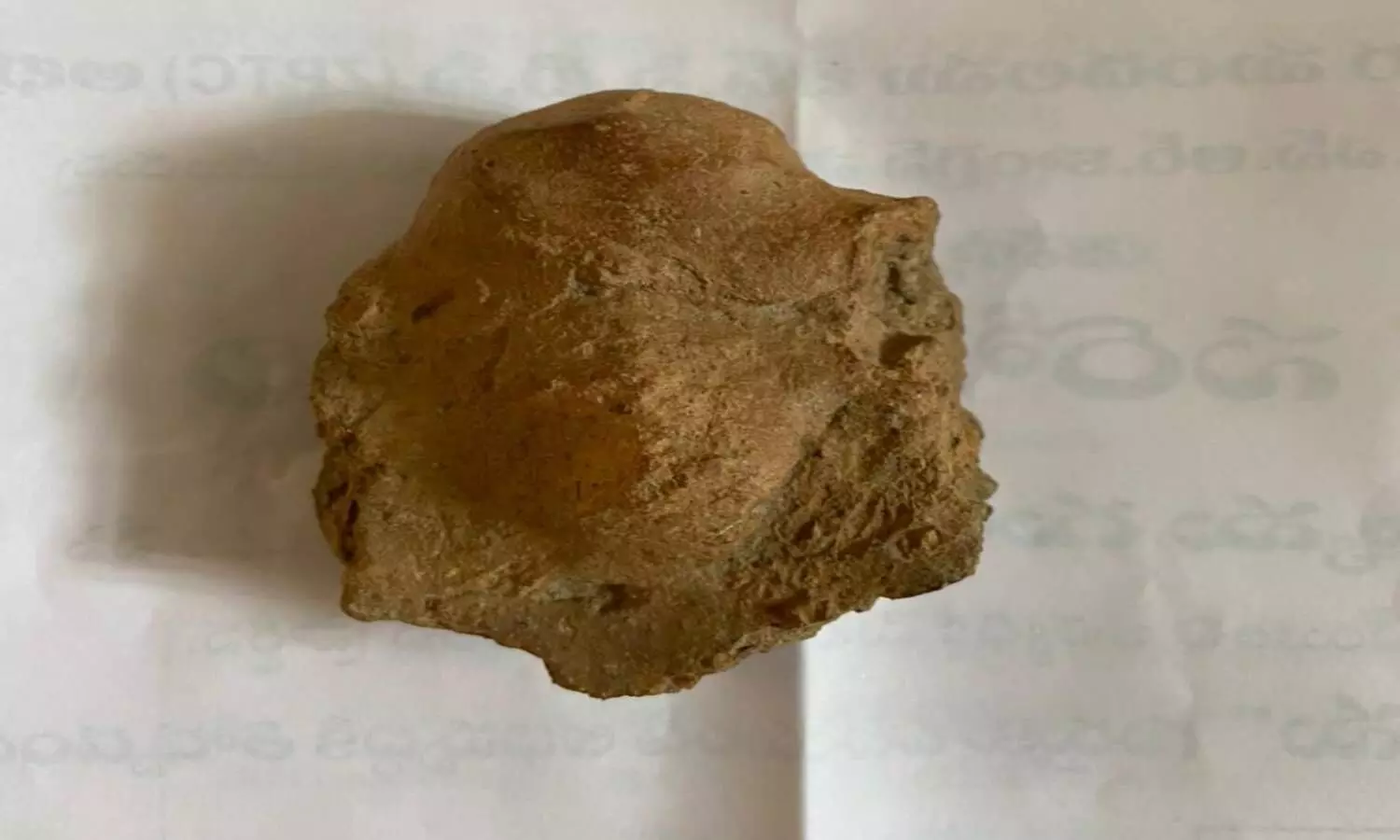Terracotta Ganesha sculpture from 2nd century Satavahana period found in Anantapur
A tiny terracotta sculpture of Ganesha dating back to the Satavahana times was discovered in the fields of former minister N. Raghuveerareddy at Nilakanthapuram village
By Newsmeter Network
Anantapur: A tiny terracotta sculpture of Ganesha dating back to the Satavahana times was discovered in the fields of former minister N. Raghuveerareddy at Nilakanthapuram village under Madakasira mandal in Ananatapuramu district on 8 April.
Dr. E. Sivanagireddy, an archaeologist and CEO of Cultural Centre of Vijayawada and Amaravathi, was conducting a thorough exploration in and around Nilakanthapuram to compile the history of the village when he made the discovery.
The sculpture measures 6x4x1.5 cms and shows the elephant god seated in the lalitasana position (flexible posture). The head of the god is elephantine without any headgear and with only two hands, a feature of the Satavahana times, he said, adding the proboscis is clearly seen turned towards the right side, another unique feature of such an early date.
The Ganesha's ears, hands, and legs are broken due to constant tilling of the land. However, based on the iconography, style, and delineation, Dr. Reddy said it dated back to the 2nd century AD. He further said that makes it one of the earliest Ganesha images in south India. A similar terracotta Ganesha dating back to the same period (2nd century AD) from Veerapuram in Kurnool district was reported by the Birla Archaeological and Cultural Research Institute in the early 1980s.
Dr. R.H Kulkarni, an art historian, also confirmed that the Ganesha was created during the time when the Brahmanical images were taking perfect forms. He cited a reference in Gathasaptasati compiled by Hala, the Satavahana emperor.
Dr. Reddy also discovered pottery from the Satavahana times as associate finds to the terracotta Ganesha. With the discovery of the image and the pottery, he said that Nilakanthapuram now gains a spot on the Satavahana map.